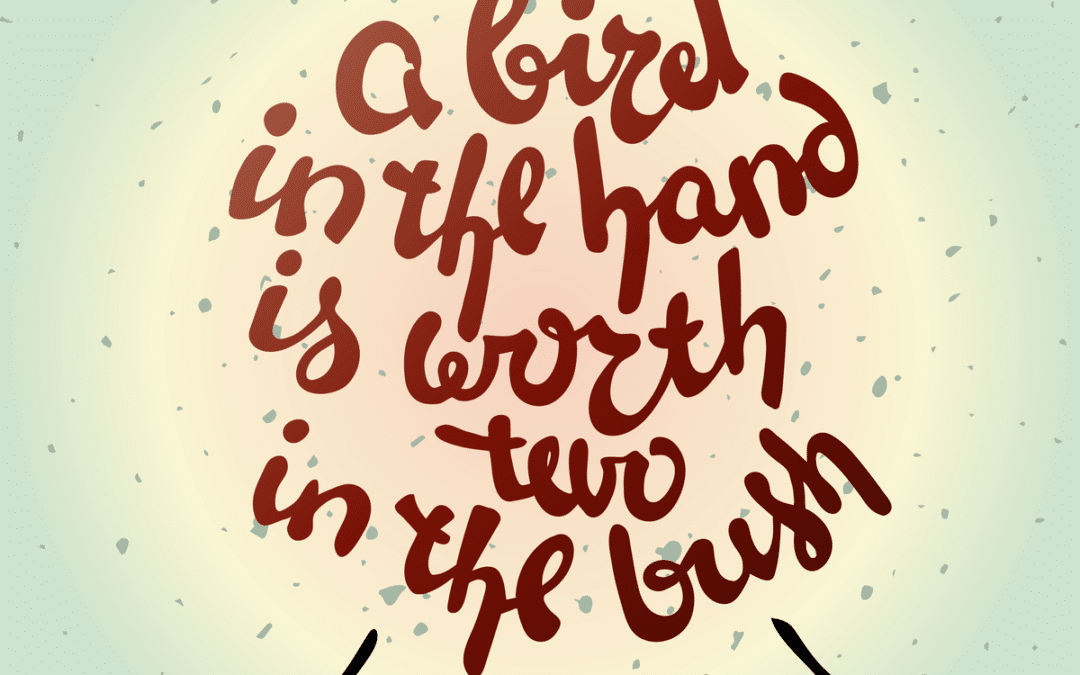Back in my recruitment days I mastered that old-school sales move of sussing out the buyer’s problem, then selling them the solution. ‘What are the consequences of not having anyone in that role for the next few months? Uh oh, you’d better hire this available candidate, rather than wait for the perfect one to materialise.’
This formula works in coaching, but only up to a point. Sometimes the client recognises the limits of continuing as they are, but despite visualising those sunny uplands of goal success, they just don’t go for it.
Isn’t it obvious how their life would be so much better if they made that leap, got promoted, became a better leader? What’s wrong with them?
Nothing’s wrong at all, this is normal. Maybe they are putting so much pressure on themselves to achieve that they can’t tolerate the discomfort of changing.
More often, they are digging their heels in because the perceived upside of the goal isn’t worth the pain of working towards it. This is called loss aversion.
The concept of loss aversion is that we are much more motivated by not losing something (often money, time, or psychological safety) than we are by gaining something new. A bird in the hand is worth two in the bush. The losses can be real or perceived but they make us shrink from a challenge or make weak decisions:
- Companies reject innovative projects that don’t have a guarantee of success, sticking to standard, low-risk, low-growth operations.
- People don’t apply for promotion because they assume that they’ll have to work longer hours and miss out on precious home/family time.
- Managers don’t lead a game-changing project or try a new role because they fear that if it goes wrong they’ll lose status.
- Life is chugging along at an even keel so we stay safe rather than avoid the potential rejection and vulnerability that comes with building new relationships or trying new things.
- We stay in unproductive situations, vote for the existing political party, or hold on to poor investments rather than risk the status quo by opting for change.
How to reframe loss aversion
Challenging cognitive biases like this (limiting beliefs or unhelpful thinking patterns that hold us back) is at the core of personal development. One route to more rational thinking is to take your mind right to the cliff edge. Draw three columns:
1. What’s the actual worst thing that could happen?
2. If it did happen, how would I cope? How would I dig myself out of the situation?
3. What can I do to prevent this worst-case scenario from happening?
To persuade others, present the upside as greater than the loss
Be aware of loss aversion when you want to win over hearts and minds. What do people stand to lose if they follow your plan? Explain the consequences of not changing and appeal to their emotions by making the change more secure. How bad could the loss really be in proportion to the upside of change? Make sure there is a real upside for them obviously.
The dark side of not understanding cognitive bias
Ever spent a voucher on something you didn’t particularly want because the voucher was about to expire and you didn’t want to miss out on a good offer? That’s loss aversion.
If being loss averse usually causes people to prefer the current state of affairs rather than risk change, how come 52% of the UK took the risky vote to leave the EU in 2016? The vote to leave marketing campaign was premised around fear of loss: that we were in danger of losing our treasured NHS unless we spent the £350 million a week on it that we ‘sent to the EU’. The campaign successfully appealed to our deep-seated fear of a collapsing NHS by visually linking the NHS logo with ‘vote leave’ every time the Brexit bus was shown by either side of the argument. If we left the EU we wouldn’t lose the NHS.
Have you experienced other examples of loss aversion? I’d love to hear about them.

